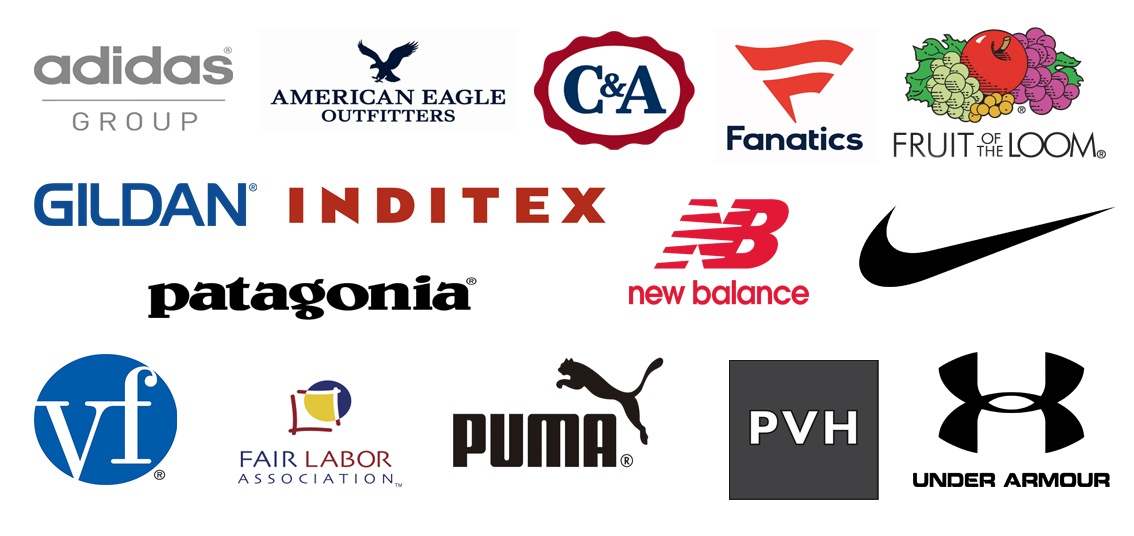How to Choose the Right Fabrics for The Branded Wardrobe
Wiki Article
Everything about Apparel: A Comprehensive Guide to Understanding Style Trends
The expedition of style fads discloses much about societal worths and individuality. Historical motions have actually formed contemporary styles, while material selections mirror both moral and visual considerations. Significant developers and social media play crucial roles in this ever-evolving landscape. As seasons transform, so also do the trends that dominate wardrobes. Recognizing these dynamics can lead to a much more thoughtful approach to personal style and sustainability. What remains to be uncovered in this elaborate web of fashion?
The Historical Development of Fashion
Throughout history, style has advanced in feedback to cultural, social, and economic changes, reflecting the worths and identifications of different eras. From the fancy garments of ancient people to the minimalist designs of contemporary times, each period showcases a distinct aesthetic affected by dominating ideologies. The Center Ages highlighted discreetness and social standing, while the Renaissance commemorated humanism and artistic expression via intricate designs. The Industrial Change introduced automation, democratizing fashion and making it available to a more comprehensive audience. The 20th century saw fast shifts, with motions such as the flapper design of the 1920s challenging typical gender standards and the countercultural designs of the 1960s personifying rebellion. Today, fashion proceeds to intertwine with globalization, sustainability, and technology, mirroring modern values while recognizing its historical roots. This recurring advancement highlights style's function as a mirror of societal change and individual identity.Secret Style Movements and Their Influence
While fashion activities frequently emerge in feedback to societal shifts, they likewise possess considerable impact on culture and identity. Throughout history, various motions have redefined visual appeals and challenged standards, such as the 1920s flapper design, which signified ladies's freedom and modernity. The punk activity of the 1970s interfered with standard fashion with its defiant attitude, mirroring social unrest. On the other hand, the minimal activity of the late 20th century emphasized simplicity and functionality, resonating with an expanding wish for authenticity and sustainability.Recent trends, such as athleisure, highlight the crossway of convenience and style, driven by the increase of health and wellness awareness. The effect of these movements extends beyond apparel; they form private expression and community identity, commonly offering as a reflection of social and political environments. Recognizing these essential fashion motions offers insight into the dynamic interplay between fashion, society, and identity in contemporary culture.Recognizing Fabric and Product Choices

Fabric Types Overview
Fabric kinds play a vital function in style, influencing both the useful and visual aspects of garments. Various fabrics display distinct qualities that deal with various designs and functions. All-natural fibers, such as cotton and bed linen, are known for their breathability and comfort, making them excellent for casual wear. On the other hand, artificial textiles like polyester and nylon provide toughness and resistance to creases, appealing for formal and energetic attire. Additionally, luxurious materials such as silk and cashmere offer style and gentleness, frequently made use of in high-end style. Each textile kind adds uniquely to the overall style, drape, and really feel of clothes, thus shaping customer preferences and trends. Recognizing these choices is vital for making educated choices in vogue.Lasting Product Options
As the apparel industry increasingly focuses on ecological duty, lasting material alternatives have actually gained substantial focus. Brand names and developers are now exploring environment-friendly fabrics such as natural cotton, Tencel, and hemp, which need fewer sources and less harmful chemicals in their production processes. Recycled materials, like polyester made from plastic bottles, are also being utilized to reduce waste and advertise circular fashion. Additionally, advancements in naturally degradable fabrics and lab-grown materials are emerging, using alternatives that reduce ecological impact. These sustainable selections not just address eco-friendly issues yet likewise resonate with customers seeking morally generated clothing. By opting for sustainable materials, the garment industry takes a crucial step towards an extra responsible future, promoting both style and environmental stewardship.Care and Upkeep Tips
Selecting the right treatment methods for specific materials is essential when it comes to maintaining the long life of clothing (The Branded Wardrobe). Different textiles need tailored methods to avoid damages and preserve their look. For instance, fragile fabrics like silk and shoelace ought to be hand-washed or dry-cleaned to prevent tearing or reducing. Cotton and polyester blends are generally much more long lasting and can endure equipment cleaning yet need to be cleaned in chilly water to avoid fading. Woollen needs mild handling; hand-washing or utilizing a woollen cycle is suggested. Additionally, air drying is preferable for a lot of products to avoid warm damages from clothes dryers. Comprehending these care demands can substantially prolong the life of garments, ensuring they remain trendy and functional for years to comeThe Role of Style Designers and Influencers
Style developers and influencers play crucial functions in forming contemporary trends. Designers bring creative thinking and technology to their collections, while influencers magnify these layouts with their systems, getting to wider audiences. Cooperations in between both typically result in trends that reverberate deeply with consumers, connecting the gap between imaginative vision and market demand.Influencer Influence On Trends
The style sector has actually long been influenced by designers, the surge of social media has shifted a substantial part of that influence to electronic designers and influencers. These people, frequently with considerable followings, curate and advertise fads that reverberate with their target markets. Their ability to attach directly with followers cultivates a read feeling of authenticity, making their endorsements more impactful than conventional advertising. Influencers regularly work together with brands, releasing collections that reflect their unique styles, which can swiftly acquire grip in the market. Furthermore, systems like Instagram and TikTok permit for instant feedback, enabling influencers to determine public passion and adapt patterns promptly. This dynamic relationship in between influencers and fashion has actually redefined just how trends spread out and arise in contemporary culture.Designer Imagination and Advancement
While influencers play a vital role in forming modern fads, the imagination and innovation of designer continue to be at the core of the industry. Designers not only create garments however likewise established the tone for visual appeals, performance, and social significance. Their one-of-a-kind visions drive the evolution of fashion, often challenging social standards and pressing borders - The Branded Wardrobe. With ingenious strategies and products, developers craft collections that reverberate with both consumers and doubters, establishing themselves as trendsetters. This creative thinking is fundamental for the sector's dynamism, as it fosters brand-new ideas and motivates future designs. In addition, the stylist's capacity to adapt to changing consumer preferences assures that their work remains relevant, ultimately influencing the wider landscape of stylePartnership Between Designers and Influencers
The synergy in between developers and influencers has actually become a specifying quality of modern-day style. This collaboration allows designers to magnify their innovative visions while influencers work as effective avenues to vast audiences. By partnering with influencers, designers can acquire immediate access to consumer understandings, enabling them to customize their offerings to current market needs. On the other hand, influencers gain from special web content and one-of-a-kind items that boost their personal brand. Social media systems have even more accelerated this partnership, allowing for real-time involvement and feedback. As trends shift rapidly, the vibrant between designers and influencers stays pivotal in shaping styles and choices, producing a symbiotic partnership that drives the garment industry ahead. Together, they redefine the borders of creativity and customer communication.Browsing Seasonal Trends and Collections
As fashion fanatics anticipate each brand-new season, guiding through seasonal fads and collections ends up being fundamental for staying fashionable and pertinent. Each period introduces a fresh combination of shades, textiles, and shapes, reflecting more comprehensive social shifts and customer choices. Developers reveal their collections during style weeks, showcasing trends that typically influence retail offerings months in advance.To browse this landscape, people should focus on essential indications such as runway highlights, influencer recommendations, and street style. Understanding how trends develop can assist in making educated investing in decisions. It's necessary to acknowledge that not every pattern will certainly resonate directly; critical which designs straighten with one's preferences and way of life is significant.Moreover, seasonal collections typically highlight flexibility, motivating customers to purchase standard items that transcend fleeting fads. By cultivating understanding of seasonal changes, individuals can curate closets that continue to be both useful and classy, ensuring they symbolize contemporary design without losing individual significance.Individual Style: Cultivating Your Distinct Wardrobe
Cultivating a distinct wardrobe requires a thoughtful strategy a fantastic read that goes beyond mere patterns, permitting people to reveal their individual design authentically. To accomplish this, one need to initially recognize their choices, body kind, and lifestyle requirements. A well-curated closet should consist of versatile pieces that can be mixed and matched, producing a wide variety of clothing options.Investing in quality over quantity is necessary; classic garments typically outlive short lived style crazes. In addition, integrating declaration devices can boost also the most basic attire, mirroring specific personality.Exploring different styles and exploring with various mixes can help in discovering what resonates most. Embracing personal flair might entail blending impacts from various eras or societies, resulting in a distinct aesthetic. Ultimately, cultivating a personal design has to do with self-confidence and comfort, making sure that each individual really feels empowered in their clothing options. A distinctive closet ends up being a canvas for self-expression, showcasing one's identification to the globe.Frequently Asked Concerns
How Do I Identify My Personal Style?
To recognize individual style, one should explore numerous motivations, try out different clothing, and assess convenience and self-confidence levels. Observing choices over time aids clear up choices, ultimately causing an one-of-a-kind, authentic closet expression.What Are the very best Ways to Upcycle Old Apparel?
Upcycling old garments can be attained with various methods such as sewing, dyeing, and including embellishments. The Branded Wardrobe. Transforming garments right into brand-new pieces not just minimizes waste yet additionally promotes creativity and personal expression in fashion optionsJust How Can I Shop Sustainably for Fashion?
Shopping sustainably for fashion involves selecting environment-friendly products, sustaining moral brand names, purchasing used items, and prioritizing quality over quantity. This mindful approach lessens environmental influence while advertising an extra liable and lasting fashion business.What Are Essential Closet Staples for each Season?
Vital wardrobe staples for every season consist of versatile items like a timeless white t-shirt, customized pants, a little black outfit, denim jeans, a light jacket, and comfortable shoes, ensuring style and functionality throughout the year.Just how Do I Care for Different Textile Types?
Caring for different textile types calls for certain techniques. For circumstances, cotton can be device washed, while silk requires mild hand washing. Recognizing each fabric's qualities warranties durability and keeps the garment's look and feel over time. The exploration of style fads reveals much concerning social worths and individual identity. Fashion designers and influencers play crucial functions in forming modern trends. While influencers play an important duty in forming contemporary fads, the creative thinking and technology of style designers remain at the core of the market. As fads shift swiftly, the vibrant between influencers and designers continues to be critical in forming styles and choices, creating a cooperative connection that drives the style sector onward. Designers reveal their collections throughout style weeks, showcasing patterns that typically affect retail offerings months in advance.To browse this landscape, people must focus on essential indicators such as path highlights, the original source influencer recommendations, and road design.Report this wiki page